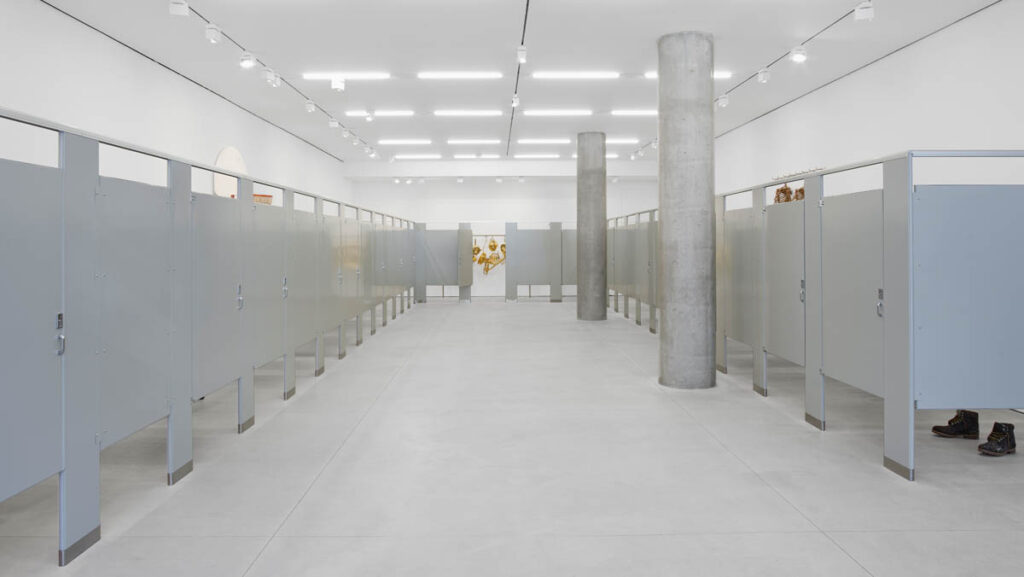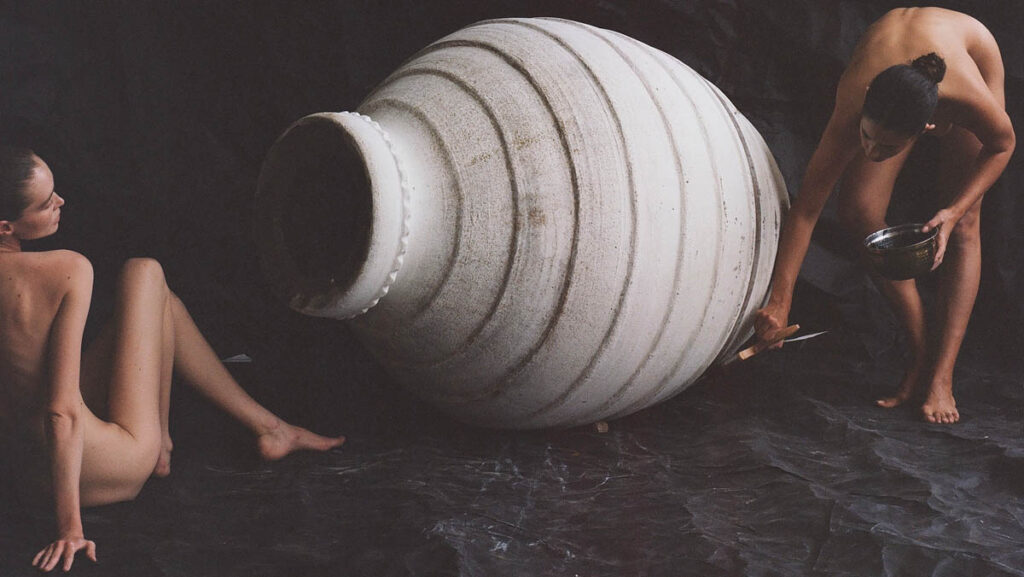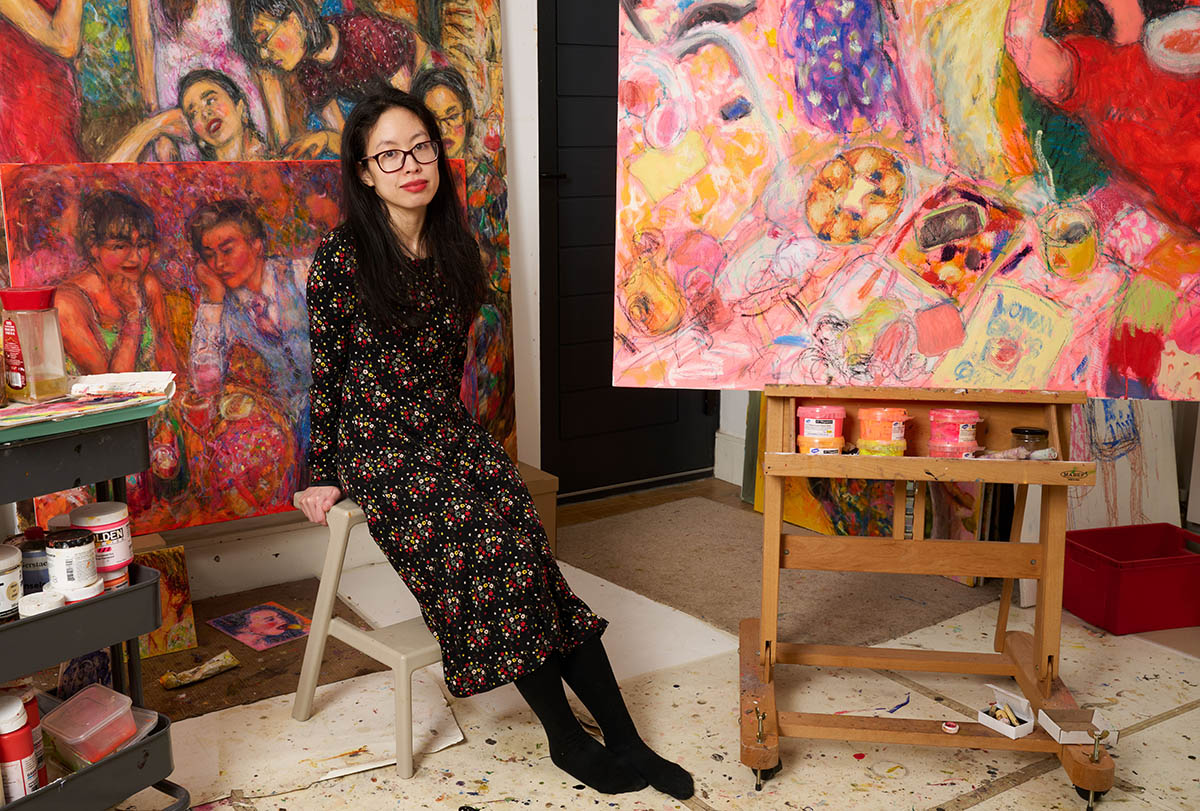
There, she devoted herself to portraying ravenous, intoxicated Asian women while forging an equally ‘greedy’ and indulgent use of materials and color. Since graduating in 2021, she has exhibited in Europe and the US and is represented by Soy Capitán in Berlin. As her art suggests, she is fond of food, cats, and messiness.
How do the urban environments influence your work?
I’m drawn aesthetically to things and places that are chaotic, cluttered, and sensorially intense, so big cities suit me. In my paintings, that bustling city atmosphere gets transplanted to the domestic realm where women fall asleep amidst the mess and detritus of their homes, everything is compressed, and there is little respite for the eye. It’s all clashing neon colors, heat, and noise.
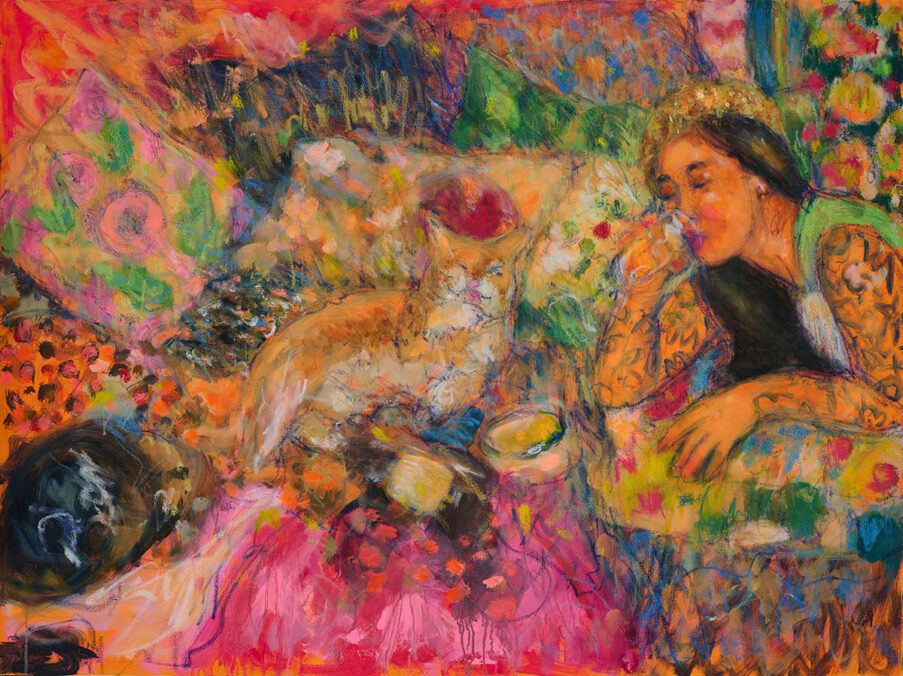
What does a cat symbolize for you?
Many things. The cat was originally a nostalgic symbol in my art — I wanted to capture the charm and eccentricity of the various cats I’d kept since childhood and my special bond with them. Then it became a broader symbol of freedom and independence, an extension of the female characters in my works who live for their own pleasure or the ‘sensations of life’ as John Gray puts it in his book Feline Philosophy (a recommended read). Unlike the noble, loyal, obedient dog, its feline (and often implicitly feminine) counterpart is immoral, untamable, lazy, and capricious. Hence throughout art history (as well as my own practice), the cat remains a feminized symbol of decadence or luxuriance (e.g., Manet’s Olympia, Vallotton’s La Paresse, the paintings of women and cats by Leonard Foujita, Ishikawa Toraji, Leonor Fini, etc.), or else a symbol of mischief (e.g., 17th-18th century still life paintings of cats stealing food, Chinese scroll paintings of cats playing).
Finally, the cat in my drawings is a stand-in for female desire or sexuality, rewriting both the tropes of the hyper-sexual Cat Woman and the weird, asexual cat lady.
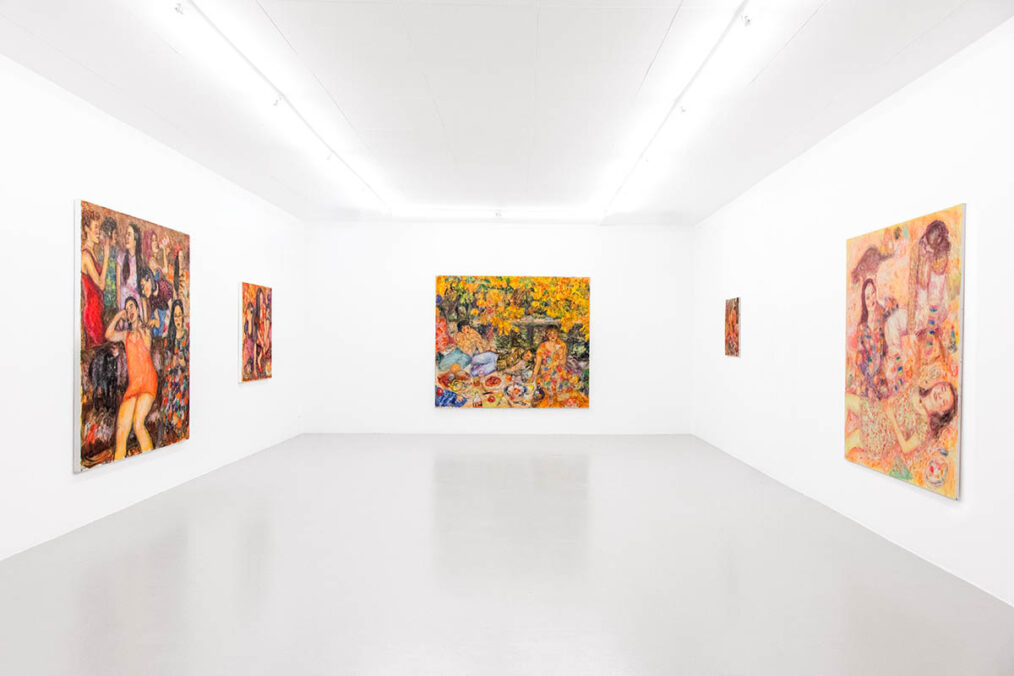
How did your artistic development progress from traditional portrait painting to expressive drawing?
I feel there’s increasingly a symbiosis of painting and drawing in my works. The definitions of these two mediums have become very blurred: are the ‘Cats and Girls’ pastel paintings or drawings? They’re on paper and there’s empty space surrounding the figures, suggesting that they’re drawings, but the layering of colors is no different from painting. Likewise, the techniques employed in ‘Picnics and Parties‘ and ‚Artificial Paradises‘ combine the marks of oil pastel, pigment stick, oil, and acrylic paint so they’re neither drawing nor painting in the traditional sense. I think ultimately, my work is a rebellion against this purist binary logic, as well as the aesthetic of neatness, politeness, and precision that had governed my training in portraiture. Portraiture, after all, is about achieving an accurate but flattering likeness. While I had a lot of respect for my highly skilled painters teachers, I noticed that many were averse to messy, haphazard, and tactile processes. Making art for them seemed more meditative and methodical than how I created art, which I felt was more ‘hungry’, visceral, and undisciplined. This, I feel, is what led to the idea of portraying unruly, greedy, pleasure-seeking Asian women (especially in the context of East Asian art which often depicts women as well-behaved and dutiful), all the while developing an aesthetic or methodology that encapsulated their voraciousness. The techniques used in my work are the result of much experimentation and self-reflection over the years, spending a lot of time alone in the studio, and undoing some of what I’d previously learned.
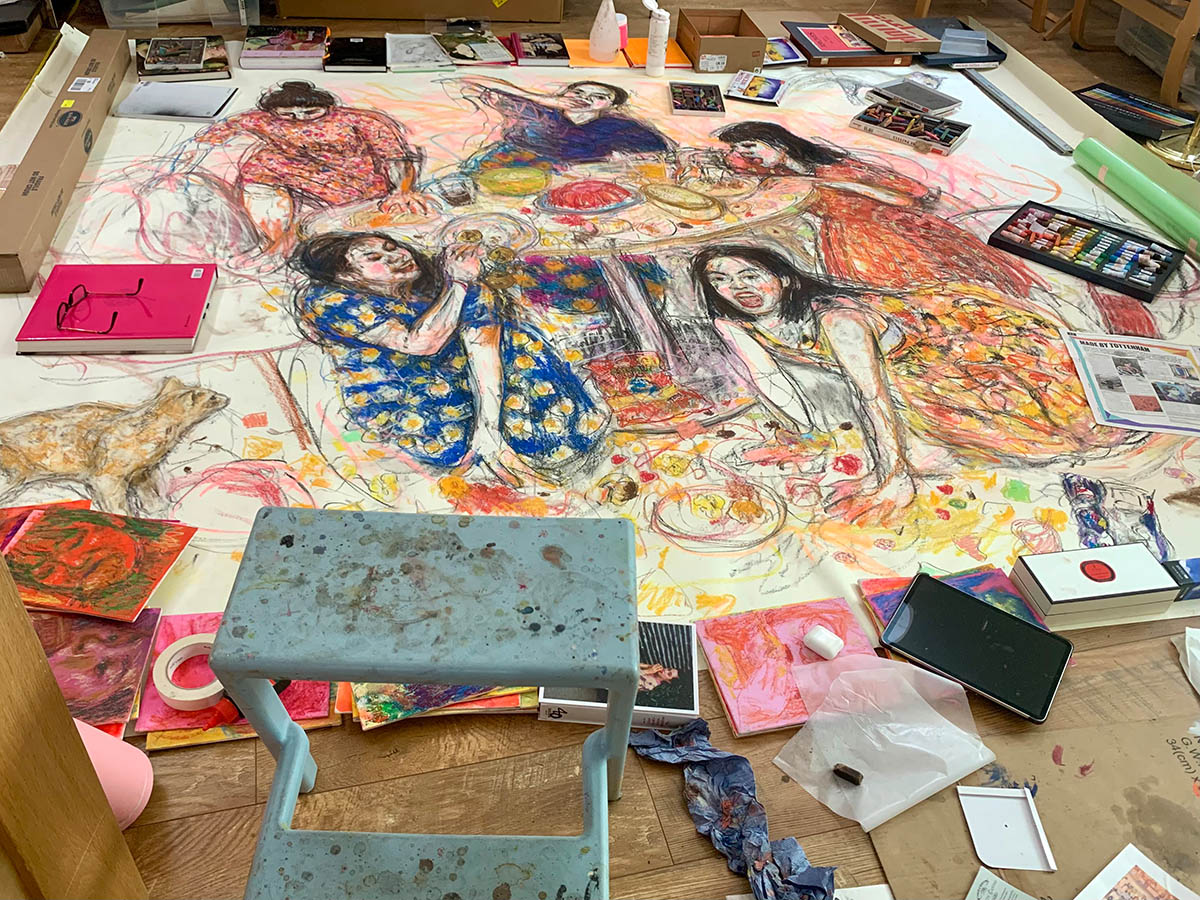
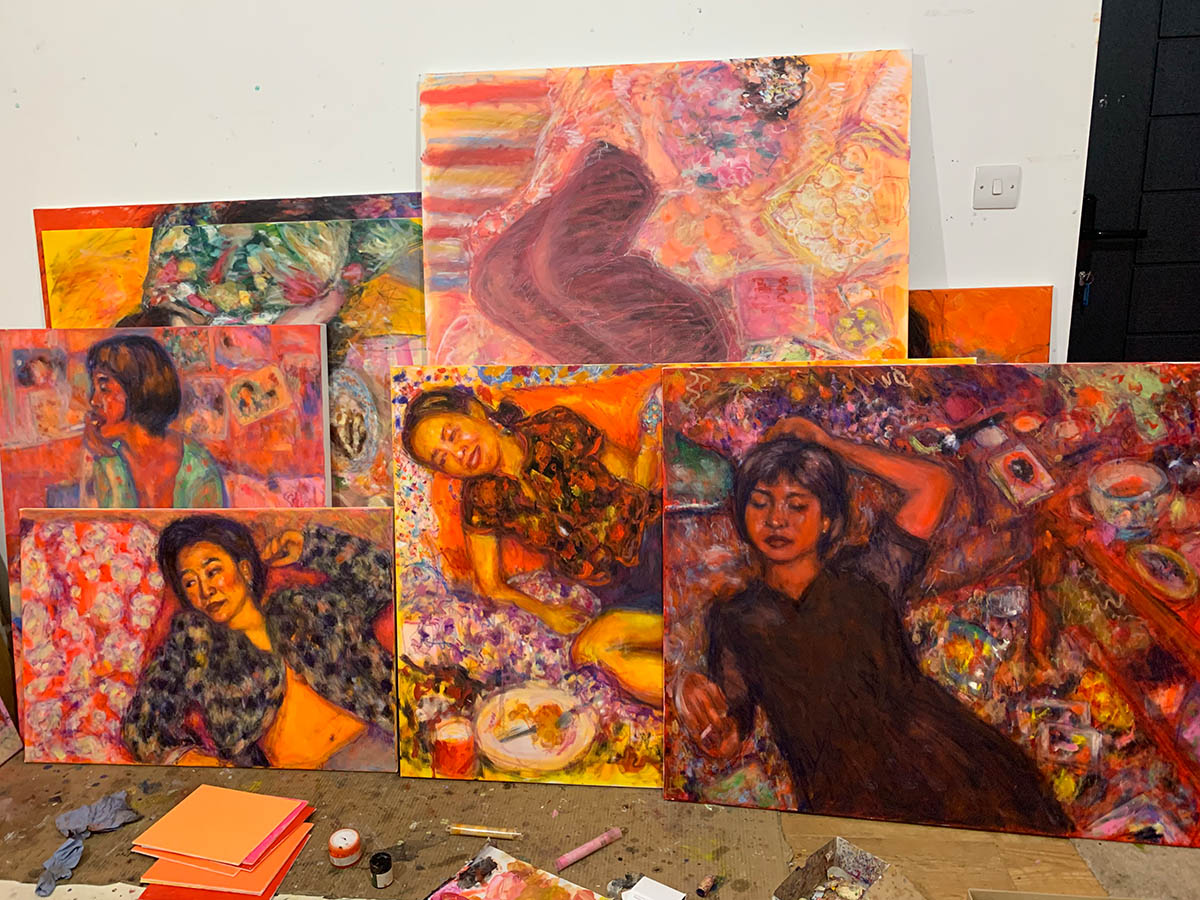
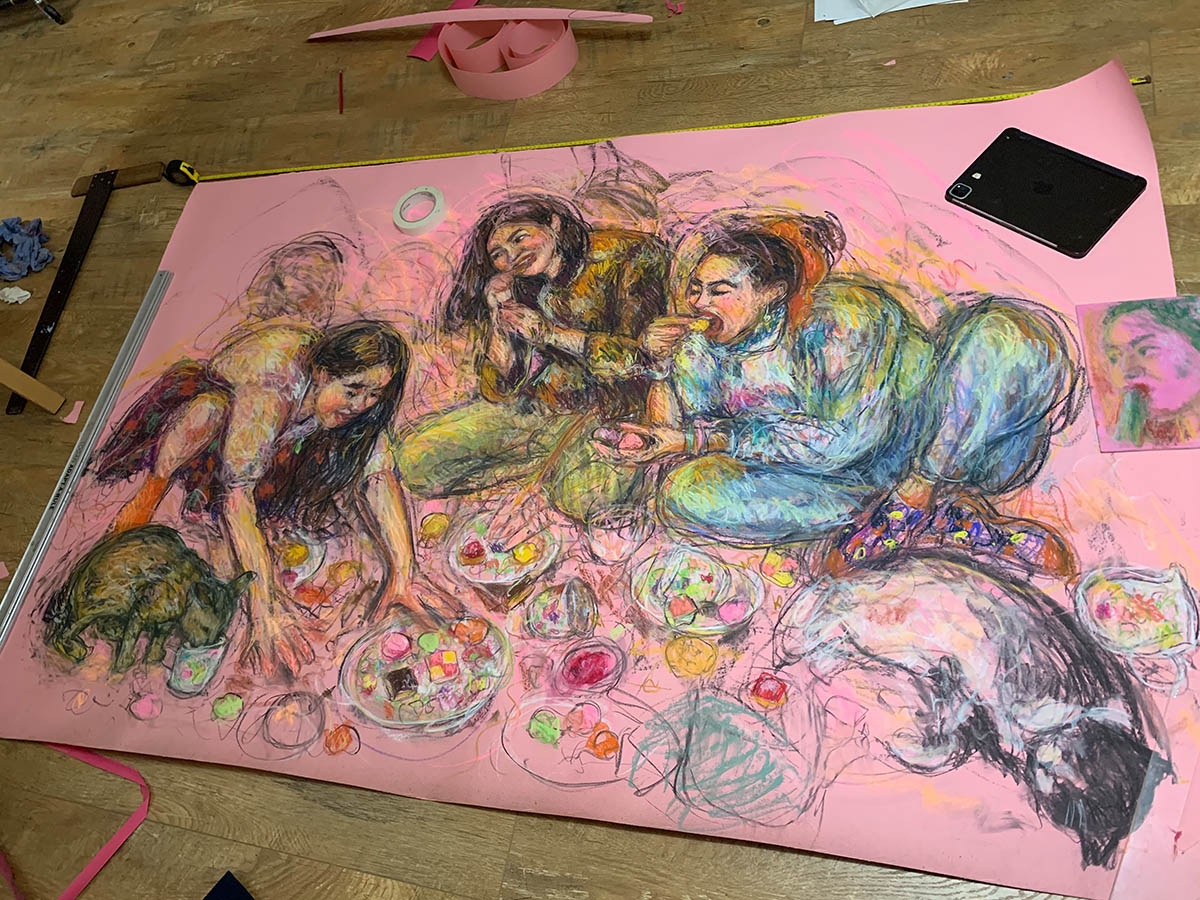
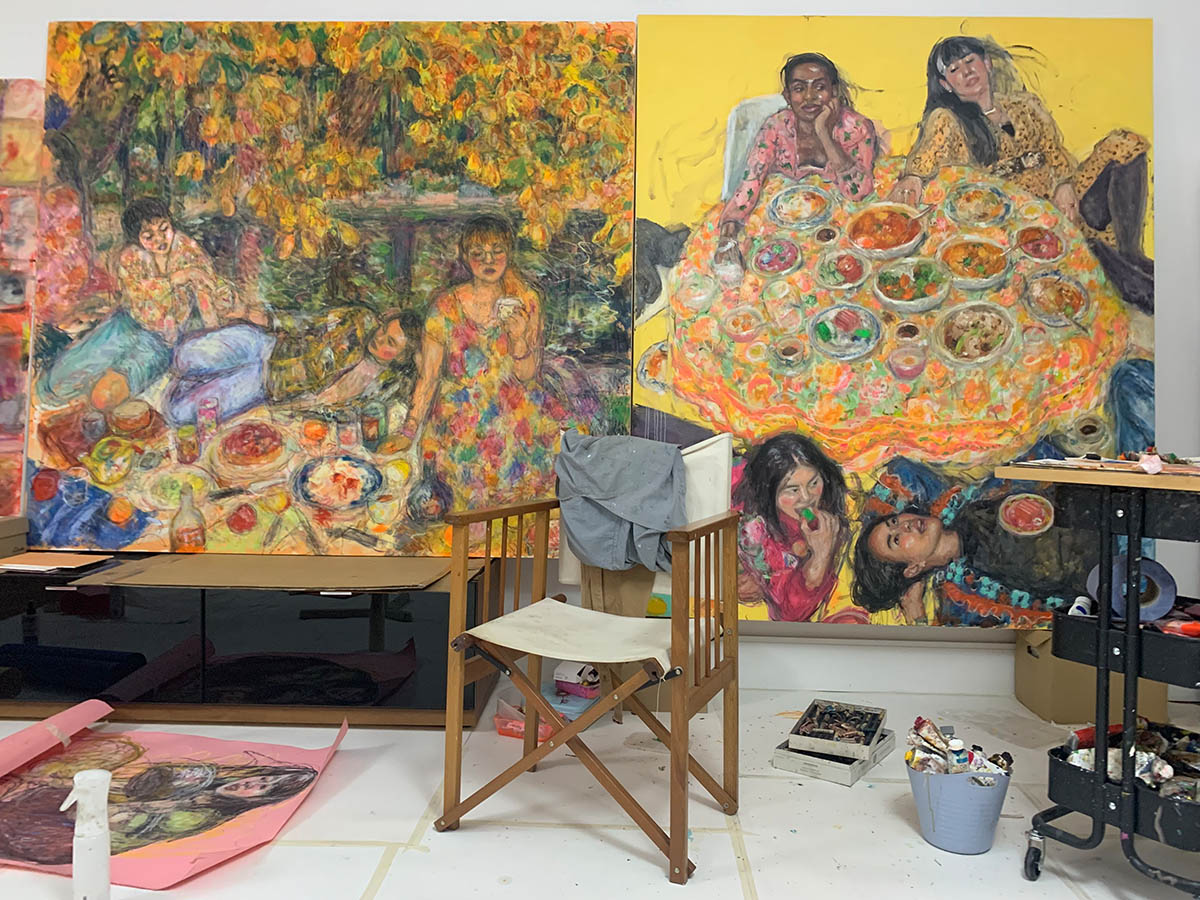
How has Southeast Asian culture influenced your vibrant and colorful portraits?
I would say I associate Southeast Asia generally with luxuriance and intensity — it’s hot and humid so life feels slower, and you sink into this sleepy, unproductive lull; it’s always sunny so colors appear more saturated, and as in all tropical countries, the local palette is just more vibrant, sometimes bordering on fluorescent — you see that in the architecture, textiles, and the flora and fauna. It’s normal to see houses painted pink or green, and the temples are very excessive and gaudy in their ornamentation. Then there’s the food culture. Food seems to occupy everyone’s minds at almost every moment. There’s so much variety that you want to try everything, and it’s a cuisine of contrasting, intense flavors, so it’s rare to have a bland dish. The food culture can seem excessive and obsessive to newcomers. It’s something I was born into so it’s natural to me, but I can’t quite explain the how’s and why’s of this fixation. In any case, all these qualities — bright colors, sweltering heat, strong, complex flavors — shape the aesthetic of my work.
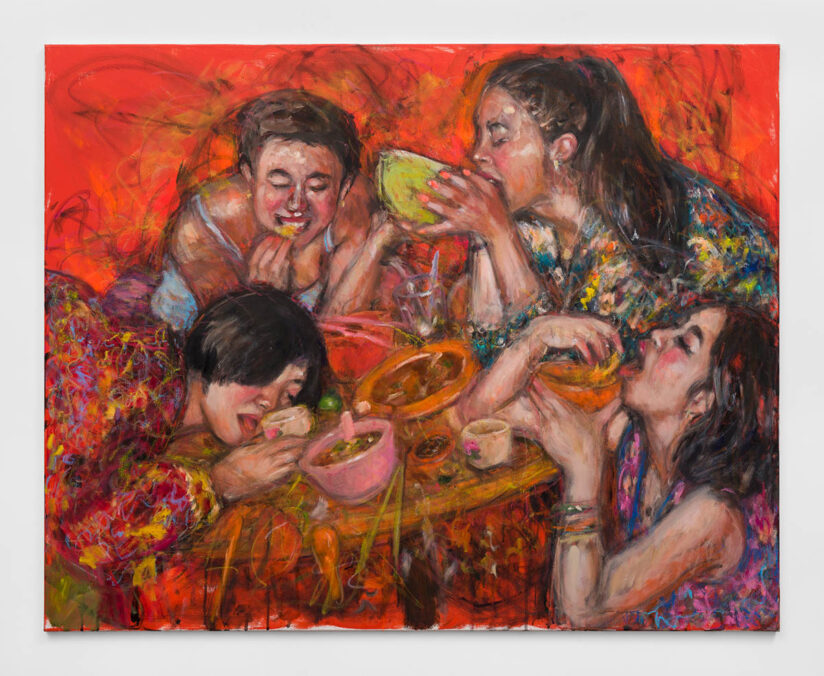
On your website, there is a text where it’s written: ‚She likens creating to eating. In both, she becomes consumed by the moment of pleasure, detaching herself from the world.‘ Can you elaborate on that analogy?
I think eating is a key metaphor in my practice because I’ve often associated eating with guilt and pleasure, and throughout my life, I’ve had a similar relationship with creating art, which is why I started making art a bit later in life. I suppose with art and food, I’m interested in how they act as outlets for repressed appetites and desires. Art and eating are physical and sensual, and through these acts, one momentarily forgets whatever anxieties and restrictions they may have.
That moment of animal or childlike simplicity is what I’m interested in.
Do you like cooking? Which dish should everyone have cooked at home?
Yes, I like cooking. Whether I’d serve my cooking to guests is another question. I am taking more time these days to experiment in the kitchen and overall find it therapeutic. I can’t think of a particular dish that everyone should have cooked at home, but I do have a fondness for butter and put it in a lot of things.
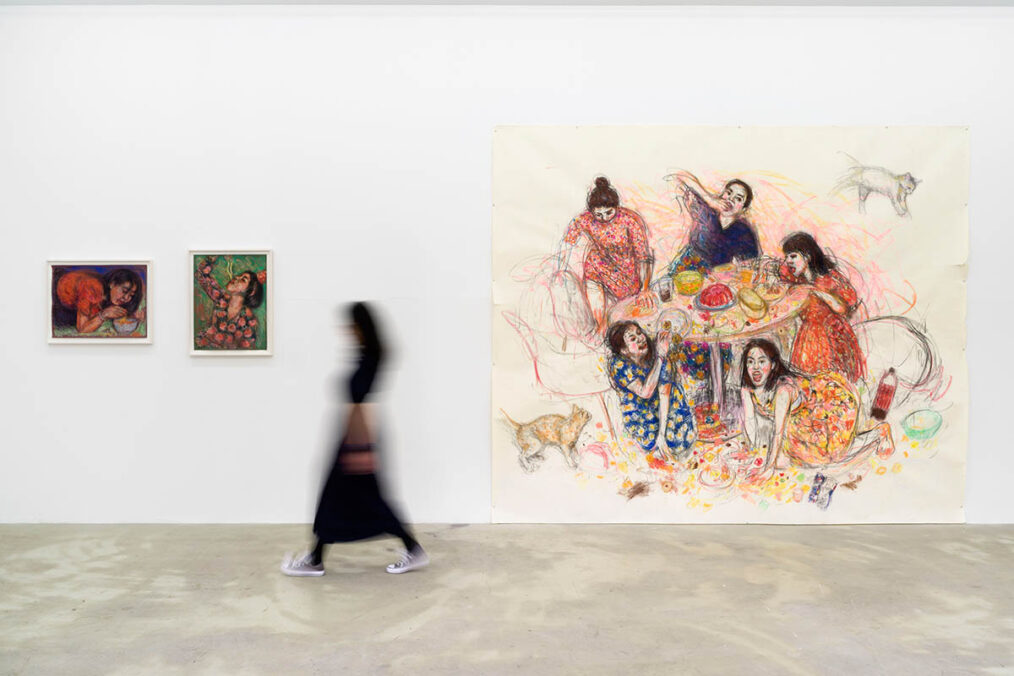
How would you describe paradise in three words?
Lush, dreamlike, boundless
How would you describe pleasure in three words?
Sinful, gluttonous, indulgent
Could you recall your most recent dream?
If I’m to answer honestly, there was food and UFOs, but I can’t remember how they were connected.
What brings you joy?
Being with loved ones, being with pets, good tea/coffee, good food, any excuse to laugh, the sun, fresh air, beauty in nature, beauty in art.
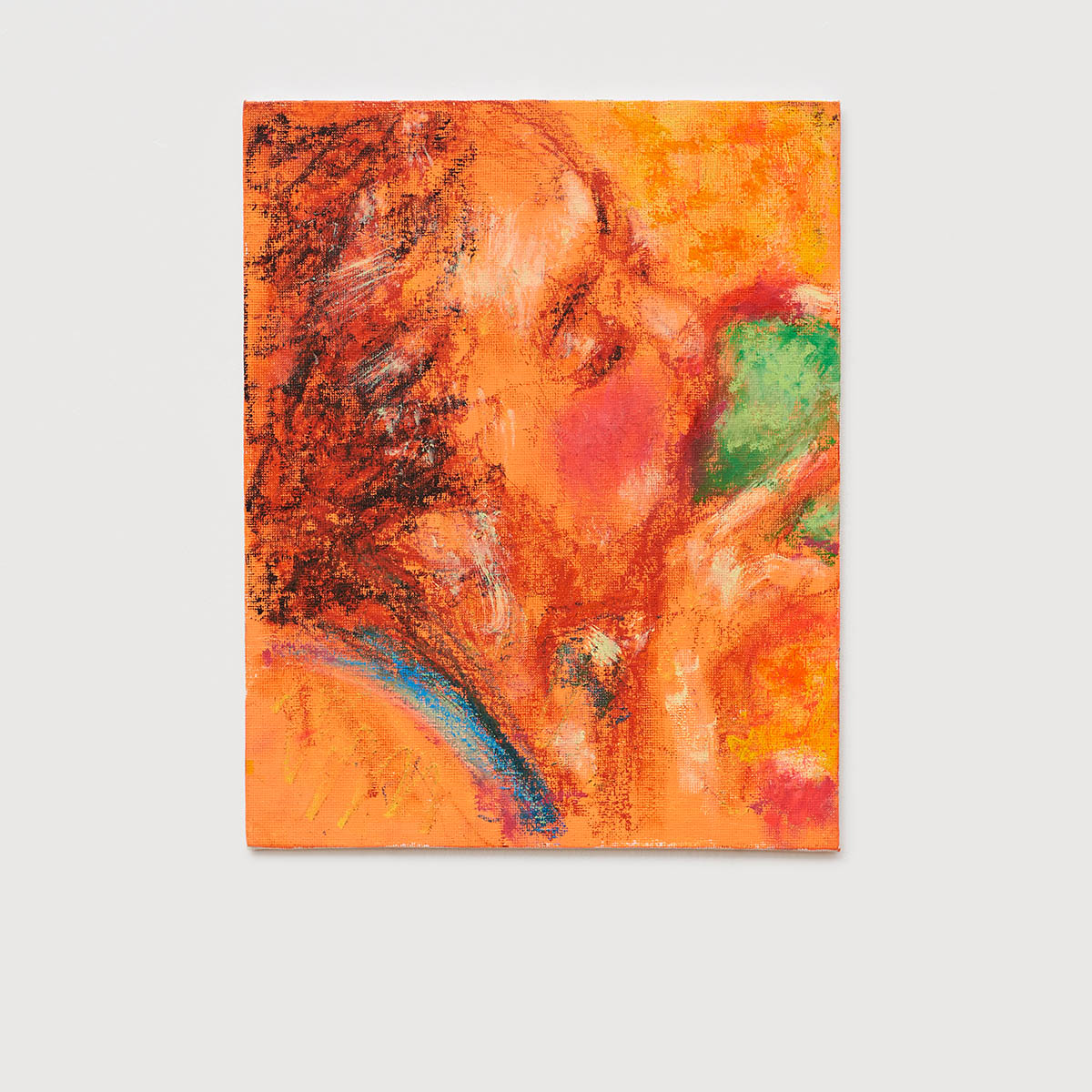
Have you ever been to Vienna, and what do you know about the city?
I haven’t and it’s on my list of places to visit. Two of my all-time favorite artists are Austrian, namely Gustav Klimt and Egon Schiele, so they’re probably my main motivation for going. And of course, I’m curious about the cuisine.
Where can one currently see your works? What are you currently working on?
I have some ‘Hungry Women’ drawings at Richard Saltoun Gallery in London, and a small work on paper at this year’s Drawing Biennial at the Drawing Room (London). I have a lot going on in the studio, perhaps way too many things, but the main series is a group of portraits of women in the kitchen destroying phallic-shaped food. I’ve been thinking of revenge and repressed rage from a female perspective and am working with the tropes of the femme fatale and the new ‘tradwife’.
Caroline Wong – www.carolinewongart.com, www.instagram.com/carolinewong_art/




